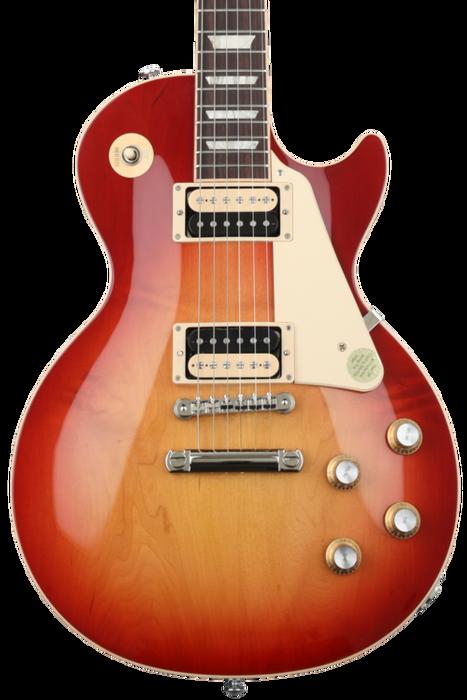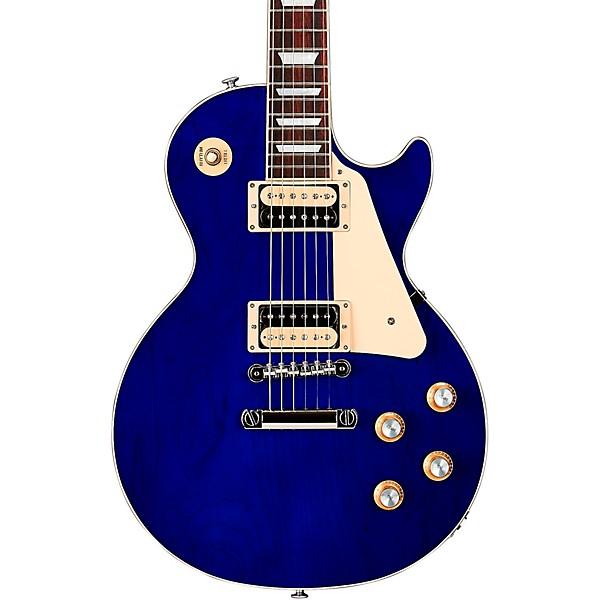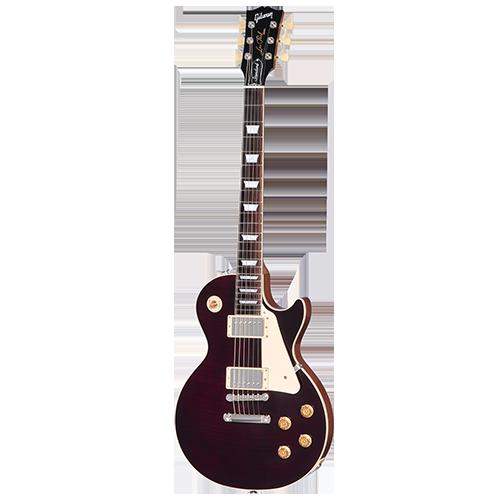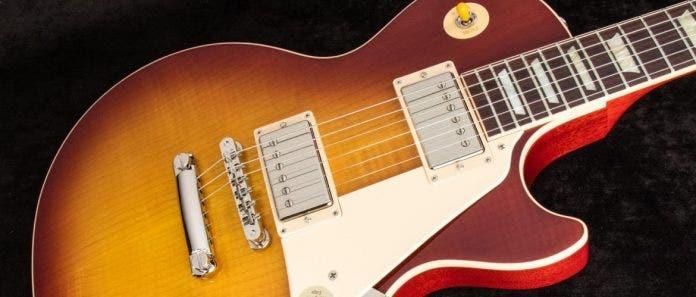Having spent a lifetime immersed in the vibrant world of guitars, particularly during my tenure at Guitar Player magazine, I’ve had the privilege to witness firsthand the captivating journey of the Gibson Les Paul. The Les Paul Classic vs Standard debate is a legendary topic among guitarists, meriting exploration beyond speculative chatter. I recently took both models for a spin and, fueled by a passion for discovering what makes each one tick, I’ve also delved into insights from seasoned professionals and fervent users alike. This article is a result of that exploration—trials, tests, and the candid conversations that ensued. If you’re grappling with which Les Paul to choose, seeking practical advice, or merely curious about the fervor these iconic guitars inspire, then join me on this journey. Together, we’ll uncover the truths, dispel the myths, and illuminate the unique qualities of these storied instruments.
What Are the Les Paul Classic and Standard?

As someone who has spent countless hours assessing guitar models, I’ve honed a keen eye for the factors that influence that intimate bond between a musician and their instrument. When it comes to the Gibson Les Paul, it’s all about the nuances of design and tone. But what exactly distinguishes the Les Paul Classic from the Standard, and why should it matter to you? Let’s delve into the heart of these storied models.
The Les Paul Classic is a nod to the past, channeling the soul of those iconic late ’60s rock tones with a clear focus on vintage aesthetics. It offers a slim-taper neck that caters to fast playing styles, giving it an edge for those who delight in nimble fretboard navigation. Its pickups present a punchy, aggressive character—perfect for guitarists seeking that grit in their sound.
In contrast, the Les Paul Standard emerges as a versatile, modern bridge between heritage and innovation. Its asymmetrical neck profile fits beautifully into the hand, promoting both comfort and precision, while the Burstbucker Pro pickups unleash a dynamic sonic palette suitable for myriad genres. The Standard is a celebration of adaptability, offering coil-splitting and phase switch functions, expanding tonal horizons for players who crave diversity.
Understanding these differences is crucial, as both models speak profoundly to different musical instincts. In my experience, these subtle yet impactful specifications are the key to finding a guitar that feels just right, regardless of whether you’re playing in the studio, on stage, or simply exploring your craft at home.
Why Choose One Over the Other?

Is the choice between a Les Paul Classic and Standard merely a matter of personal taste, or something more profound? As I delved into the nuances of these iconic instruments, it became evident that the decision transcends simple preference. Through my extensive interviews with guitarists, I’ve learned that every player’s choice is deeply tied to their unique sound and performance needs.
The Les Paul Classic speaks to those who crave the undeniable warmth and vintage aura of its 1960s predecessors. Its thinner neck and spirited pickups deliver a punchy resonance that fuels expressive lead play. When I cradled it in my hands, the sonic nostalgia transported me back to an era where rock ‘n’ roll was born.
Conversely, the Les Paul Standard offers modern innovation without sacrificing heritage. It wields a more versatile capability through its weight-relieved body and updated electronics. Playing it, I understood why some musicians choose versatility, finding comfort in its adaptability to multiple genres.
Ultimately, your decision isn’t just about choosing a guitar; it’s about forging the path to your distinctive soundscape.
Who Are These Guitars For?

Could the right guitar be the missing piece in a guitarist’s journey to finding their voice? This question isn’t just a catchy phrase; it’s a reality I’ve witnessed countless times throughout my career. Over the years, I’ve seen many players flourish after picking the right model, proving that the right fit can influence both comfort and creativity.
For the seasoned player, the Gibson Les Paul Classic provides a sense of familiarity and reliability. It’s like meeting an old friend who encourages you to push boundaries while maintaining a solid foundation. Its rich tones and classic feel make it perfect for those who value tradition but aren’t afraid to experiment.
On the other hand, the Les Paul Standard appeals to those seeking modern advancements without losing the iconic essence. Think of it as a canvas for the ambitious artist looking to paint their masterpiece. Whether diving into intricate solos or exploring new genres, this guitar adapts to your evolving style.
The common thread? Both models cater to a guitarist ready to elevate their artistry, whether by honing established skills or bravely exploring new territories. Selecting the right guitar isn’t just about sound—it’s about unlocking potential, and sometimes, finding that missing piece to your musical voice.
Where to Buy and What to Expect?

Did you know that understanding weight relief can save you from a sore back and enhance your playing experience? When choosing between a Gibson Les Paul Classic and Standard, this detail is a game changer for your comfort and performance. From my time in the marketing realm, I’ve learned that the right guitar should not only match your musical style but also feel like an extension of yourself.
Purchasing a Gibson Les Paul often feels like embarking on an epic quest. You’ll find them in specialty music shops and online stores like Sweetwater, Guitar Center, or even directly from Gibson. But here’s the crucial part: try to play the guitar before you buy it. Feel its weight, listen to its resonance, and ensure it aligns with your unique sound. From my experience, holding the guitar in your hands is worlds apart from studying its specifications on a screen. Trust me, your back will appreciate this forethought and so will your music.
When Should You Consider Upgrading?

When is the right time to take the plunge and invest in a guitar upgrade, especially with so many models available? It’s an essential question for any guitarist teetering on the edge of their next big musical commitment. In my years of working with both novice and professional players, I’ve found that an upgrade is not just about acquiring a new instrument; it’s about unlocking the new musical possibilities that come with it.
Timing is crucial. If you find your skills rapidly evolving and your current guitar is not keeping pace—maybe the sound feels thin or the playability lacks fluidity—it might be time to consider stepping up. Upgrading is a journey to enhance your sonic palette, and both the Gibson Les Paul Classic and Standard offer compelling reasons to make that leap. The tactile feedback, tonal depth, and sheer artistry they bring can transform your playing experience. My encounters with these guitars have solidified my belief that sometimes, a refined tool can spark unforeseen creativity.
FAQs
What is the key difference between the Gibson Les Paul Classic and Standard?
How does the sound of the Les Paul Classic compare to the Standard?
Which guitar is more suited for modern music styles?
What are the aesthetic differences between the two models?
Which guitar would be better for a vintage sound?
Conclusion
In a world brimming with choices, what insights can help you decide between the Les Paul Classic and Standard? From my rich journey in music journalism, I’ve delved deep into the essence of these iconic guitars, guided by countless guitar comparisons and user reviews. The Les Paul tonal differences struck me profoundly, revealing that the Classic with its nostalgic purity might appeal to those favoring vintage rock vibes, whereas the Standard’s versatile finesse suits modern genres.
Reflecting on my journey through music journalism, I understand that emotions, playability, and sound will consistently inform your choice. My experiences with both models have been enlightening, teaching me that you must feel the resonance personally to make an informed decision. Ultimately, I hope my insights assist you in navigating your guitar journey, ensuring your choice resonates not just in sound, but in spirit.

Michael Molenda, the transformative Editor in Chief of Guitar Player magazine from 1997 to 2018, revolutionized its content and expanded its influence. With over 2,500 published works, including in-depth interviews and technical analyses, he’s a giant in guitar journalism. Post-Guitar Player, he launched CONTENT BY MOLENDA and co-founded music websites, bringing his unmatched expertise to the forefront of music marketing. At Fretterverse, Molenda continues to shape the guitar world with insightful commentary and trendsetting journalism.
